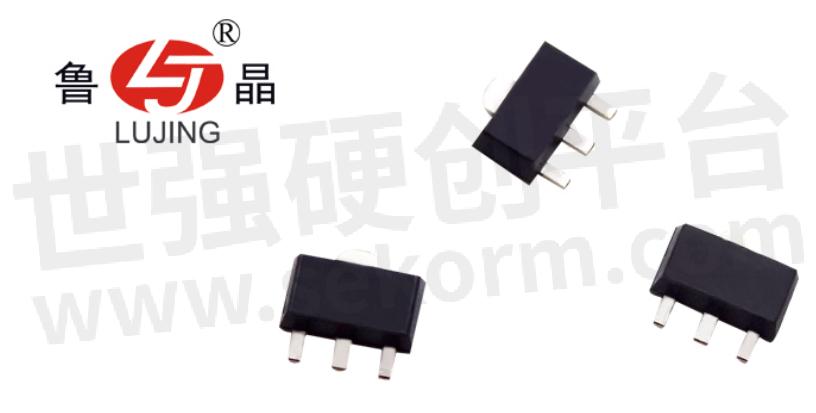Triode Replacement Principle

Transistor, also known as a semiconductor transistor, also known as a bipolar transistor, a transistor, is a semiconductor device that controls a current. Its function is to amplify a weak signal into an electrical signal with a large amplitude, and is also used as a contactless switch. A transistor, which is one of the basic semiconductor components, has a current amplification function and is a core component of an electronic circuit. This article mainly introduces the Triode replacement principle.
The triode is to make two PN junctions on a semiconductor substrate with short distances. The two PN junctions divide the whole semiconductor into three parts. The middle part is the base area and the two sides are the emitter area and the collector area. The arrangement is PNP. And NPN two.
The types of commonly used transistors are NPN type and PNP type. Because these two types of transistors work (work summary) with different voltage polarity requirements, they cannot be replaced with each other.
Transistor materials are germanium materials and silicon materials. The biggest difference between them is the starting voltage is not the same. The turn-on voltage of the PN junction is about 0.2V, and the turn-on voltage of the PN junction of the silicon tube is 0.6-0.7V. In the amplifying circuit, if the same type of helium tube is used to replace the same type of silicon tube, or the same type of helium tube is replaced by the same type of silicon tube, generally it is possible to perform the necessary voltage on the base bias voltage. The adjustments, because their starting voltages are not the same. However, whether the triodes of different materials in the pulse circuit and the switch circuit can be interchanged must be specifically analyzed and cannot be replaced blindly.
The main parameters of the transistor
The choice of triode needs to understand the main parameters of the triode. It is best if you have a transistor feature manual in your hand. Transistor parameters are many, according to practical experience, I think mainly to understand the four extreme parameters of the transistor: ICM, BVCEO, PCM and fT can meet the needs of more than 95% of the use.
1. ICM is the maximum allowable collector current. When the transistor work (work summary) when its collector current exceeds a certain value, its current amplification factor β will decrease. For this reason, the maximum current of the collector when the current amplification factor β of the transistor does not exceed the permissible value is called ICM. Therefore, in use, when the collector current IC exceeds ICM, it will not damage the triode, but it will reduce the value of β and affect the performance of the circuit (work summary).
2. BVCEO is the collector-emitter reverse breakdown voltage when the base of the transistor is open. If the voltage applied between the collector and the emitter exceeds this value during use, it may cause the transistor to generate a large collector current. This phenomenon is called breakdown. Triode breakdown will cause permanent damage or performance degradation.
3. PCM is the maximum allowable power dissipation of the collector. When the triode is in operation (work summary), the collector current generates heat on the collector junction and heats the triode. If the dissipated power is too large, the transistor will burn out. In use, if the transistor is operated longer than the PCM (work summary), the transistor will be damaged. It should be noted that the maximum allowable dissipated power given by the high-power transistor is in the case of a radiator with a certain size. Be sure to pay attention to this in use.
4. Characteristic frequency fT. As the frequency of the work (work summary) increases, the amplification ability of the triode will decrease, and the frequency fT corresponding to β=1 will be called the characteristic frequency of the triode.

Fig.1
- +1 Like
- Add to Favorites
Recommend
- What Is The Difference between s8050 Triode and ss8050 Triode?
- Structure and Classification of Triode
- PNP Triode is Widely Used in Audio Amplifier and Power Controller
- Hottech Adopts SOT-23 Packaged Triode S9012 being Seen in Many Common Consumer Products
- HKT PNP Triode MMST3906 Can be Used for Audio Amplification and Radio Switch
- The S9015 Triode Produced by Hottech Can be Used in Audio Amplifier Circuits and LED Applications
- Hottech‘s Digital Triode, the DTC144EE, Packaged in SOT-523, Finds Applications in Smart TV and Audio Fields
- What Are The Common Types of Triodes?
This document is provided by Sekorm Platform for VIP exclusive service. The copyright is owned by Sekorm. Without authorization, any medias, websites or individual are not allowed to reprint. When authorizing the reprint, the link of www.sekorm.com must be indicated.





























































































































































































































































































































































































































































































































































































































































































































































































































































































